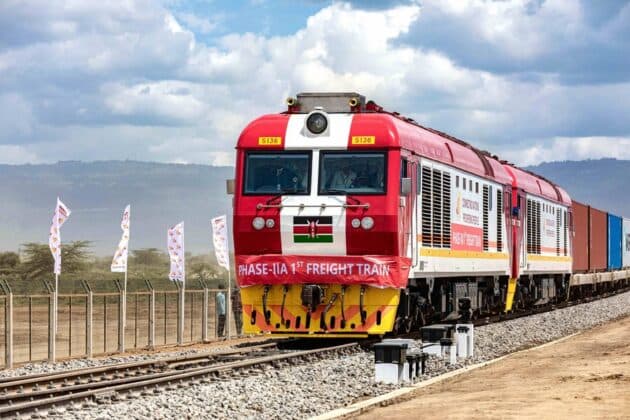Loading News Article...
We're loading the full news article for you. This includes the article content, images, author information, and related articles.
We're loading the full news article for you. This includes the article content, images, author information, and related articles.
The joint multi-billion shilling railway extension aims to slash transit times and boost trade between Kenya and Uganda, cementing Mombasa's role as the region's primary gateway, though significant questions over financing and debt persist.

Construction on the long-awaited extension of the Standard Gauge Railway (SGR) from Naivasha in Kenya to Kampala, Uganda, is scheduled to begin in early 2026, Kenyan President William Ruto announced on Sunday, November 23, 2025. The project, a joint venture between the two East African nations, aims to create a seamless, high-capacity transport artery from the Port of Mombasa deep into the regional hinterland, with future connections planned for Rwanda and the Democratic Republic of Congo.
Speaking in Tororo District, Uganda, alongside President Yoweri Museveni, President Ruto confirmed a formal launch for the project in January 2026. "In January, we will be launching the extension of the SGR from Naivasha to Kampala to connect with the Malaba-Kampala line and later to DRC," President Ruto stated, emphasizing the project's goal of strengthening regional trade and integration within the East African Community (EAC).
The announcement marks a significant step forward for a critical component of the Northern Corridor Integration Projects (NCIP), which has faced numerous delays, primarily due to financing challenges. The initial phases of Kenya's SGR, from Mombasa to Nairobi and then to Naivasha, were largely funded by the Export-Import Bank of China (China Exim Bank). However, funding for the subsequent phases stalled, with the Naivasha-Malaba section terminating abruptly and forcing reliance on the older, less efficient meter-gauge railway for onward transit.
While the 2026 start date provides renewed momentum, the precise financing structure for the costly extension remains a subject of intense focus. The Kenyan section, covering the approximately 475 kilometers from Naivasha to Malaba via Kisumu (Phases 2B and 2C), is estimated to cost around KSh 648 billion ($5.3 billion). Recent government statements indicate a diversified funding strategy. In May 2024, officials confirmed a renewed funding commitment from China's Exim Bank, complemented by funds from the African Development Bank and Kenya's own Railway Development Levy Fund. Other reports suggest Kenya may issue a long-term bond to raise up to Sh390 billion, leveraging future revenues from the Railway Development Levy to repay investors.
Uganda, for its part, has moved forward with the 272-kilometer Malaba-Kampala section. After years of delays with a Chinese contractor, Uganda signed a contract with Turkish firm Yapı Merkezi in October 2024. The Ugandan government has earmarked significant funds for the project in its next financial year, supported by an $800 million financing agreement with the Islamic Development Bank. To ensure seamless operation, technical teams from both countries held bilateral meetings in November 2025 to harmonize technical standards, including designs, signaling, and rolling stock, as Uganda plans an electric railway while Kenya's is diesel-powered.
The primary objective of the SGR extension is to dramatically improve the efficiency of the Northern Corridor, which handles over 85% of trade for the EAC. Uganda is Kenya's largest export market, and the current reliance on road transport and the old meter-gauge railway from Naivasha results in high costs and long transit times, with journeys from Mombasa to Kampala taking up to seven days. Proponents expect the completed SGR to cut this transit time to under 24 hours and reduce freight costs by as much as half.
For Kenya, a fully operational SGR to the Ugandan border and beyond is critical for the long-term viability of the entire network. It is expected to significantly boost cargo volumes, generate more revenue to service the massive loans taken for its construction, and solidify the Port of Mombasa's position as the dominant gateway to East and Central Africa. The extension will traverse the counties of Narok, Bomet, Kericho, Nyamira, and Kisumu, with expected economic benefits for agriculture, trade, and tourism, including improved access to the Maasai Mara and the revitalization of the Kisumu Port.
The project is also a cornerstone of wider regional integration, aligning with the EAC's vision of a unified market and the African Continental Free Trade Area (AfCFTA). Alongside the SGR, President Ruto announced that Kenya and Uganda will jointly extend the petroleum pipeline, further enhancing regional infrastructure. Despite the clear economic potential, the immense cost and associated public debt remain a central concern, underscoring the critical need for the project to achieve its projected efficiencies and cargo volumes to ensure its sustainability.